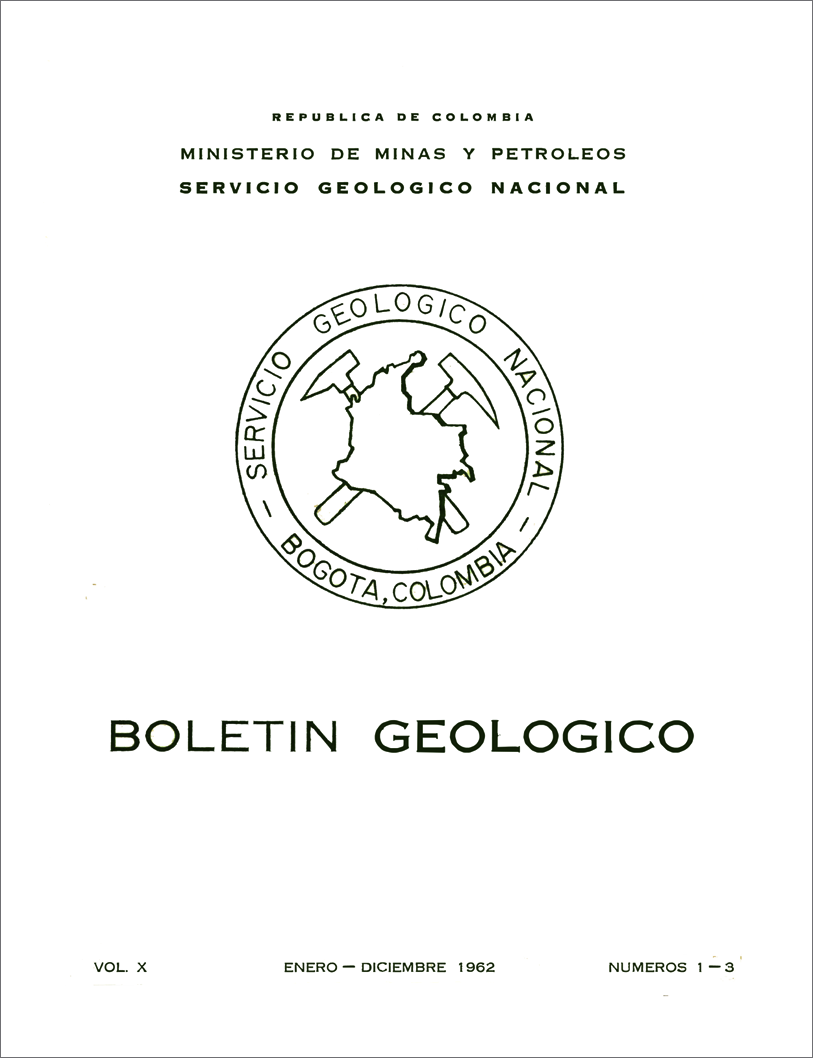Contribution to the knowledge of the Western Cordillera. Cali-Buenaventura road section
DOI:
https://doi.org/10.32685/0120-1425/bolgeol10.1-3.1962.235Keywords:
Colombia, petrological study, mining development, Dagua Group, Higher Tertiary, Andean foldingLicense
Copyright (c) 1962 Servicio Geológico Colombiano

This work is licensed under a Creative Commons Attribution 4.0 International License.
Downloads
How to Cite
Issue
Section
Published
Abstract
During a short exploration of the Cali-Buenaventura section, a petrological study of the oldest formations in this section of the Cordillera Occidental was carried out.
Chapter IV deals with the shales of the Dagua Group, which -according to their facies- were subdivided into four members: the graphitic member, the calcareous member, the clayey-tobaceous member, and the silicified member.
Chapter V defines the characteristics of the volcanic rocks and sedimentary intercalations of the Diabassic Group. The effects of a propylitization, which has altered the diabases near the summit, will be discussed: the potential economic importance of such a propylitization is indicated.
Chapter VI deals with a tonalitic intrusion into the Dagua Group and its contact effects.
It the end, in Chapter VIII, concepts about the tectonic constitution of the terrain are given. First, it is stated that the siliceous schist belts, found on the left margin of the Dagua and Jordan rivers and to the W of Queremal, occur due to fracturing in large flakes on the eastern flank of a compressed and fractured syncline. Then, it is presumed that the diabases extending from the Dagua-Jordan fault to the lower Tertiary near Cali are folded in an anticlinal structure.









